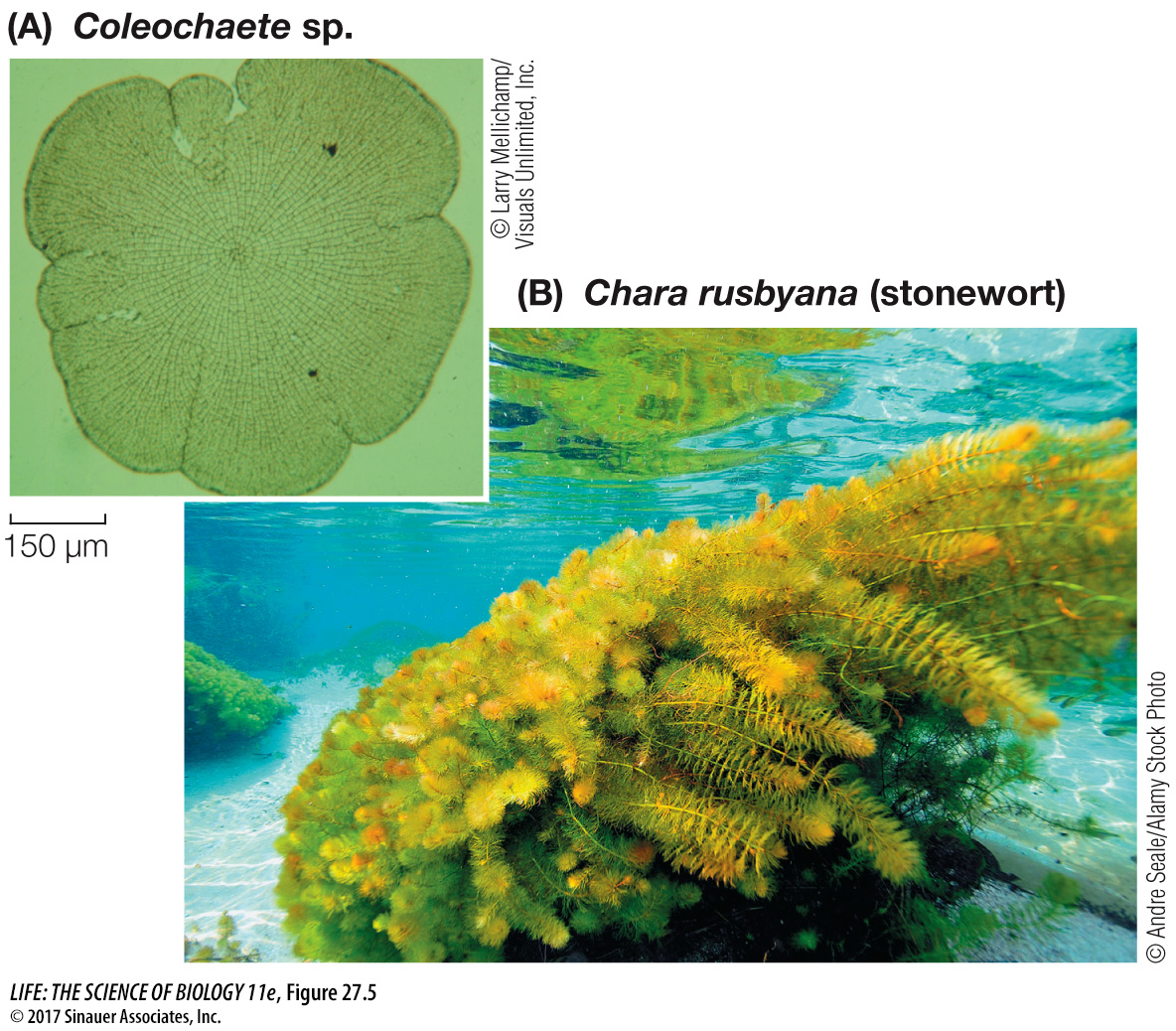Two groups of green algae are the closest relatives of land plants
All green algae other than the chlorophytes form a group together with the land plants known as streptophytes (see Figure 27.1A). Several microscopic structural features, backed by clear evidence from molecular studies, indicate that the closest relatives of the land plants are two groups of aquatic green algae, the coleochaetophytes (Figure 27.5A) and the stoneworts (Figure 27.5B). Both of these multicellular algal groups retain their eggs in the parental organism, as land plants do. As in land plants, the cytoplasm of adjacent cells in these algal groups is connected through structures called plasmodesmata; they also share similarities in the details of mitosis and cytokinesis. Of these two groups, stoneworts are thought to be the sister group of land plants (see Figure 27.1A). The growth form of stoneworts is branching and apical (new growth occurs at the tips of branches), as in most land plants. Phylogenetic analysis of gene sequences has confirmed the close relationships of coleochaetophytes and stoneworts to the land plants.

Media Clip 27.1 Reproductive Structures of Stoneworts
www.life11e.com/